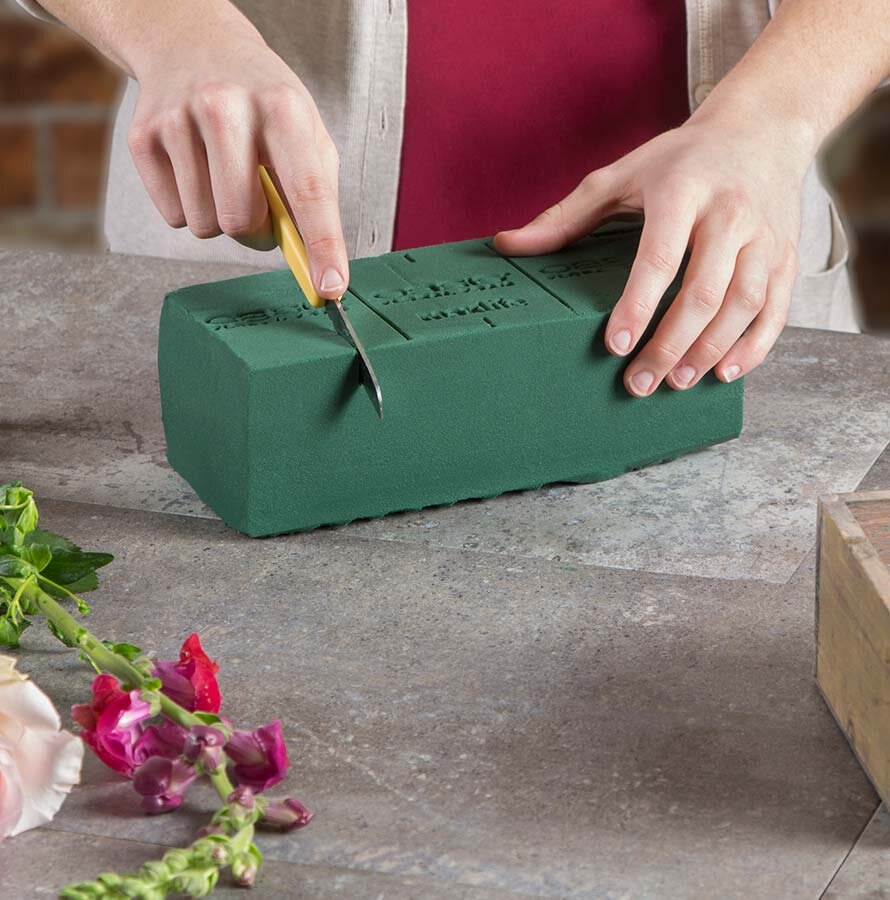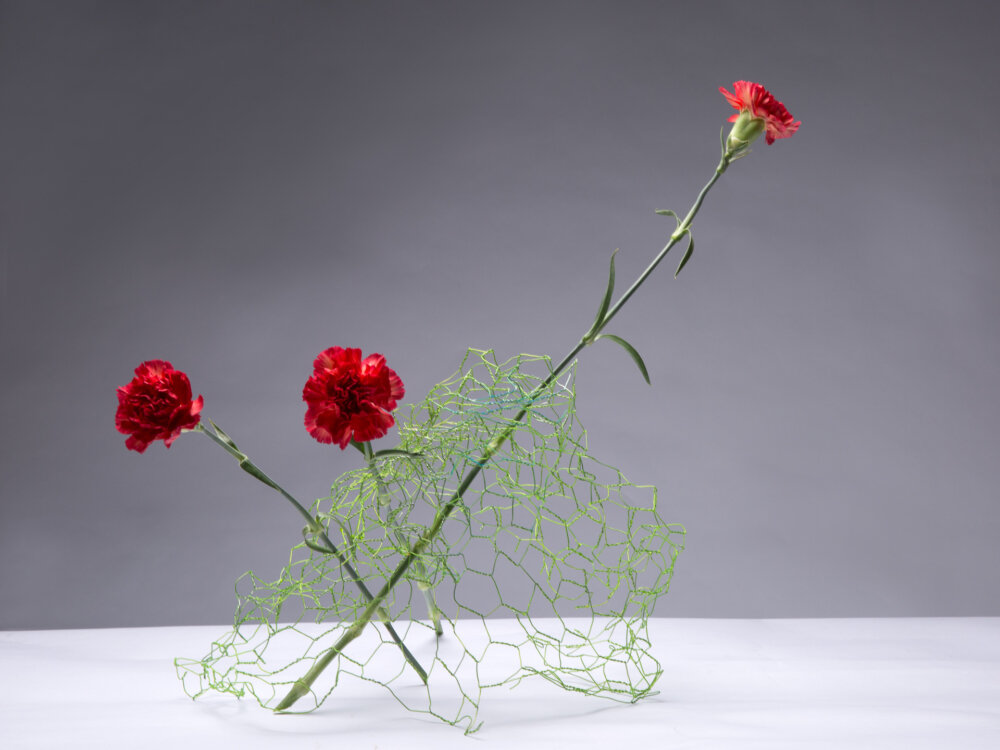Floral Foam is Plastic
Florals can make or break an event’s design. Amiright? Florals can transform a room, and give an event the “wow” factor. Elaborate floral decor has taken center stage in every type of event from weddings to fashion shows. But those centerpieces might be full of single use plastic. Yep, that green, sponge-like foam that’s been a staple for florists for decades is actually made of plastic. Concern over the use of floral foam has been escalating over the years, and there’s really good reasons why.
Floral foam provides a foundation to build the arrangement. Floral foam revolutionized the floral industry when it was first introduced in the 1950s. Floral foam is loved for its convenience and qualities. It’s a lightweight material that can be cut to fit any vase. It holds stems tightly in place, which makes it easy to transport the arrangement. Floral foam soaks up 50 times its weight in water, so it keeps florals arrangements hydrated; and, blends into the foliage thanks to its green or black color.
Floral foam is sometimes referred to as Oasis (Oasis is a brand name like Kleenex).
Floral Foam is the plastic bag of the floral industry.
It’s often mistaken for a natural product, but floral foam is a non-biodegradable plastic (phenolic resin) that can’t be recycled or composted. Floral foam is derived from petroleum which is a non-renewable resource, and also contains carcinogens including formaldehyde and carbon black.
Floral foam must be thrown away in a landfill, but any product that’s made of plastic doesn’t ever fully decompose, it just breaks down into smaller and smaller pieces of plastic (called microplastics). Water that has been used in floral arrangements using floral foam should never be poured directly in the sink, gutter, or toilet, as the small bits of it will pollute the water and oceans with these microplastics. Instead, pour the water out over a pillowcase which will collect the bits of floral foam that have broken off, and then discard these bits, along with the brick, into a trash can.
Recently, Oasis created a product called “Bio Floral Foam”. According to the Oasis website this product “has been shown by ASTM D5511 to biodegrade 100% in 567 days in biologically active landfill conditions and can increase flower life up to 50%. Appropriate facilities may not exist in your area.”
The biggest issue here is that these biologically active landfills, known as bioreactor landfills, are very, very rare. In fact, “bioreactor landfills being a novel technology are still in the development phase and are being studied in the laboratory-scale” according to this Wikipedia page. With the lack of these special landfills, the floral foam will break down the same as the original version.
As bad as it is for the planet, it’s equally harmful to florists and staff.
Floral foam exposes florists and their staff to hazardous materials. If the bricks are cut when they are dry, floral foam dust containing formaldehyde is easily inhaled. The dust is also harmful to the skin and eyes, in fact, An online safety sheet advises to “avoid prolonged or repeated skin contact.” However, oftentimes this material is handled daily by people that work in the floral industry.
Royal Horticulture Society (RHS) Bans the use of floral foam in 2021.
In January 2020, the RHS in the UK began to phase out the use of floral foam. In 2021, the ban on using this material became official. Last year, Helen Petti, Director of shows at RHS said, "Floral foam uses micro-plastics and is currently non-recyclable; with this in mind we have come to the decision to ban the use of floral foam at RHS Shows from 2021 and have asked that floral designers at RHS Shows this year trial alternative products where possible.”
Alternatives:
The good news is that many floral designers are embracing the use of floral foam. Some floral designers even feel that their designs look more natural without a brick of foam at the base. Some alternatives include using chicken wire, flower frogs, or creating a structure of small branches or twigs at the base; and, small test tubes of water , or compostable bouquet wraps can be used to keep the stems hydrated. To complete the circulatory system, the chicken wire can be reused or recycled, and the plastic tubes can also be reused many times. And of course twigs are compostable.
Floral foam alternative
The Green Wedding Shoes website has a post here that shows pictures of elaborate (and gorgeous) foam free designs. Designer Annie Heath is the founder of Ida Blooms, a Bay Area floral design studio. She wrote a great blog post here for Team Flower about creating a foam free wedding arbor.
Lynn Fosbender of Pollen, and an eco-friendly florist, writes a wonderful blog about how she transitioned away from floral foam.
Once you go down the rabbit hole, you’ll see how many excellent resources there are online to find alternatives to floral foam, including foam free mechanics for large scale installations, like the blog from Tobey Nelson of Sustainable Floral Design here.
There are currently over 100,000 posts on Instagram with the hashtag #nofloralfoam.
Take Action
There is an online petition here encouraging Oasis to discontinue manufacturing of their single use foams, and speed creation of a 100% certified compostable alternative.
As we aim to phase out single use plastics from events, the use of floral foam is something we’re excited to check off our lists.





